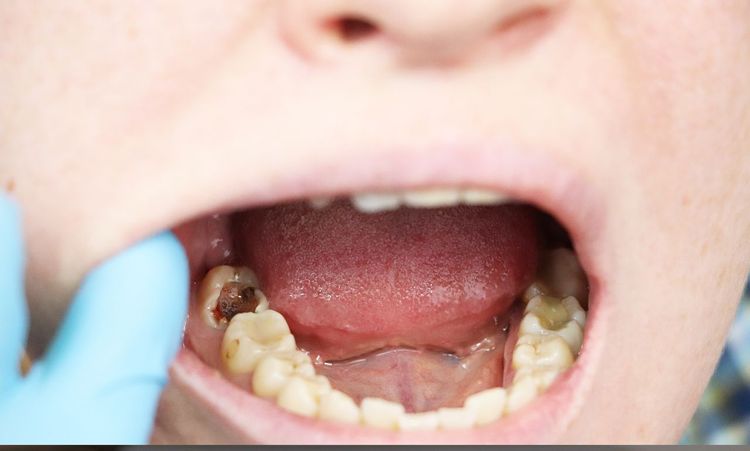You're considering dental implants - a wise choice for replacing missing teeth and restoring your smile. Dental implants provide unmatched stability, functionality, and aesthetics compared to other tooth replacement options. But before you embark on this journey, it's essential to understand what are the 3 stages of dental implants.
This in-depth guide will walk you through each phase of the dental implant process, from the initial consultation to the final placement of your new teeth. By the end, you'll have a clear picture of what to expect, allowing you to approach your dental implant journey with confidence and peace of mind. Let's dive in and explore the world of dental implants.
What is a Dental Implant?
A dental implant is a small titanium post that is surgically inserted into your jawbone to replace the root of a missing tooth. Once the implant integrates with the surrounding bone through a process called osseointegration, it provides a stable foundation for a dental crown, bridge, or denture.
Dental implants are the gold standard in tooth replacement for several reasons:
- Durability: With proper care, dental implants can last a lifetime.
- Natural Look and Feel: Implants look and feel like your natural teeth, allowing you to eat, speak, and smile with confidence.
- Bone Preservation: Unlike bridges or dentures, implants stimulate the jawbone, preventing bone loss.
- Independence: Implants don't rely on neighboring teeth for support, preserving the health of your remaining teeth.
Now that you understand the basics of dental implants let's explore what are the 3 stages of dental implants.
Stage 1: Consultation and Planning

The success of your dental implant journey hinges on thorough planning and preparation. Stage 1 involves a comprehensive evaluation of your oral health, medical history, and personal goals to develop a tailored treatment plan.
Initial Consultation and Examination
Your journey begins with an in-depth consultation with a dental professional specializing in implants. During this visit, expect the following:
- Medical History Review: Your dentist will review your medical history to identify any factors that may impact the success of your implants, such as medications, chronic illnesses, or smoking.
- Oral Examination: A thorough examination of your teeth, gums, and jaw will be conducted to assess your overall oral health and determine if you're a good candidate for implants.
- Imaging: X-rays, CT scans, or 3D imaging may be used to evaluate the density and dimensions of your jawbone, as well as the location of nerves and sinuses.
- Discussion of Goals and Expectations: Your dentist will listen to your concerns, answer your questions, and discuss your desired outcomes to ensure you have realistic expectations.
Pre-Implant Procedures
Based on the findings from your initial consultation, your dentist may recommend additional procedures to prepare your mouth for implants:
- Bone Grafting: If your jawbone is too thin or soft to support an implant, bone grafting may be necessary. This involves adding bone material to your jaw to create a stable base for the implant. Bone grafts can be sourced from your own body, a donor, or synthetic materials.
- Sinus Lift: For upper jaw implants, a sinus lift may be required if there isn't enough bone height in the back of the jaw. This procedure involves adding bone below the sinus membrane to create space for the implant.
- Tooth Extraction: If you have remaining damaged or decayed teeth that cannot be saved, they will need to be extracted before the implant placement.
These preparatory procedures may add time to your overall treatment plan, but they are crucial for the long-term success of your implants.
Stage 2: Surgical Implantation
With the planning and preparation complete, it's time for the main event: the surgical placement of your dental implants. This stage involves the precise insertion of the titanium posts into your jawbone, setting the stage for osseointegration and the eventual attachment of your new teeth.
Pre-Surgical Preparations
Before your implant surgery, your dentist will provide you with detailed instructions to ensure you're prepared:
- Fasting: If you're receiving IV sedation or general anesthesia, you'll be asked to fast for a specified period before the procedure.
- Medications: Your dentist may prescribe antibiotics or anti-inflammatory medications to take before and after the surgery to reduce the risk of infection and manage pain and swelling.
- Transportation: Arrange for a trusted friend or family member to drive you to and from the appointment, as you won't be able to drive after receiving sedation or anesthesia.
Surgical Procedure

The implant placement surgery is typically an outpatient procedure performed under local anesthesia, IV sedation, or general anesthesia, depending on your specific needs and preferences. Here's what you can expect:
- Anesthesia Administration: Your dentist will ensure you're comfortable and pain-free before beginning the procedure.
- Incision: A small incision is made in your gum to expose the jawbone where the implant will be placed.
- Drilling: Using precise instruments, your dentist will create a hole in the jawbone to accommodate the implant.
- Implant Placement: The titanium implant is carefully inserted into the prepared hole and positioned for optimal integration with the bone.
- Healing Cap or Temporary Crown: A healing cap or temporary crown may be placed over the implant to protect it during the healing process.
- Suturing: The incision is closed with stitches, and you'll be given time to rest and recover before being released to go home.
The entire surgical procedure usually takes 1-2 hours per implant, but this can vary based on the number of implants being placed and the complexity of your case.
Post-Surgical Care
Proper post-operative care is essential for successful healing and implant integration. Your dentist will provide you with detailed instructions, which may include:
- Pain Management: Over-the-counter pain relievers or prescription pain medications can help manage discomfort in the days following surgery.
- Ice Packs: Applying ice packs to your cheeks can reduce swelling and bruising.
- Soft Food Diet: Stick to soft, cool foods for the first few days to avoid irritating the surgical site.
- Oral Hygiene: Gentle brushing and rinsing with an antimicrobial mouthwash can help keep your mouth clean and prevent infection.
- Activity Restrictions: Avoid strenuous activities for a few days to allow your body to focus on healing.
Your dentist will schedule follow-up appointments to monitor your healing progress and address any concerns that may arise.
What to Expect During Dental Implant Recovery?
The recovery process after dental implant surgery varies from person to person, but understanding the general timeline can help you prepare for what lies ahead.
Immediate Post-Surgery Period
In the first 24-48 hours after surgery, you may experience:
- Swelling and Bruising: Some degree of swelling and bruising around the surgical site is normal and usually peaks around the third day before gradually subsiding.
- Discomfort: Mild to moderate pain and discomfort can be managed with prescribed pain medications or over-the-counter pain relievers.
- Bleeding: Slight bleeding or oozing from the surgical site is common in the first few days. Biting on gauze packs can help control bleeding.
First Week
During the first week of recovery, you'll likely notice a significant improvement in swelling, bruising, and discomfort. However, it's essential to continue following your dentist's post-operative instructions:
- Soft Food Diet: Continue with soft foods that don't require much chewing, such as smoothies, soups, and mashed potatoes.
- Oral Hygiene: Gently brush your teeth, avoiding the surgical site, and rinse with an antimicrobial mouthwash as directed.
- Activity Level: Gradually return to your normal activities as you feel comfortable, but avoid strenuous exercise for at least a week.
Long-Term Healing
The osseointegration process, in which the implant fuses with the surrounding bone, can take several months. During this time:
- Follow-up Appointments: You'll have periodic check-ups with your dentist to monitor the healing process and ensure the implant is integrating properly.
- Gradual Return to Normal Diet: As healing progresses, you can slowly reintroduce firmer foods into your diet. However, avoi
- d hard, crunchy, or sticky foods that could put excessive pressure on the implant.
- Oral Hygiene Maintenance: Maintain a diligent oral hygiene routine, brushing twice a day, flossing daily, and using an antimicrobial mouthwash as directed by your dentist.
How Do You Protect Your Dental Implants After Surgery?
Protecting your dental implants after surgery is crucial for their long-term success. Here are some key tips:
- Oral Hygiene: Brush your teeth gently with a soft-bristled toothbrush and floss carefully around the implant site to keep the area clean and prevent infection.
- Regular Dental Check-ups: Attend all scheduled follow-up appointments with your dentist to monitor the health of your implants and address any potential issues early on.
- Avoid Smoking: Smoking can slow down the healing process and increase the risk of implant failure. If you smoke, it's essential to quit or at least refrain from smoking during the healing period.
- Wear a Night Guard: If you grind your teeth at night, wearing a custom-made night guard can protect your implants from excessive pressure and wear.
- Avoid Hard and Sticky Foods: Once your implants have fully healed, it's still important to avoid hard, crunchy, or sticky foods that can damage the implant or the attached crown.
How Many Checkups Do I Need After Surgery?
The number and frequency of check-ups after dental implant surgery vary depending on your individual case, but here's a general timeline:
- First Week: You'll have a follow-up appointment within the first week after surgery to check the healing process, remove any stitches, and address any concerns.
- Osseointegration Period: During the 3-6 month osseointegration period, you'll have periodic check-ups, usually every 4-6 weeks, to monitor the implant's integration with the bone.
- Crown Placement: Once osseointegration is complete, you'll have an appointment to take impressions for your final crown and check the fit and comfort of the crown.
- Long-Term Maintenance: After your implant treatment is complete, you'll need to continue with regular dental check-ups every 6 months to maintain the health of your implants and natural teeth.
Who Cannot Have a Dental Implant?

While dental implants are a highly successful tooth replacement option, they may not be suitable for everyone. Factors that may affect your eligibility for dental implants include:
- Inadequate Jawbone: If you have insufficient jawbone density or volume to support an implant, you may need to undergo bone grafting before implant placement.
- Gum Disease: Active gum disease can interfere with implant success. It's essential to treat any gum disease before getting implants.
- Certain Medical Conditions: Conditions that affect healing, such as uncontrolled diabetes, autoimmune disorders, or radiation therapy to the head and neck area, can reduce the success rate of implants.
- Smoking: Smoking can slow down the healing process and increase the risk of implant failure. If you smoke, your dentist may recommend quitting before getting implants.
- Age: Dental implants are not recommended for children and teenagers whose jaws are still developing. In most cases, implants are placed once jaw growth is complete.
Conclusion
Dental implants are a life-changing solution for missing teeth, offering unparalleled stability, functionality, and aesthetics. By understanding what are the 3 stages of dental implants - consultation and planning, surgical implantation, and recovery and maintenance - you can approach your implant journey with confidence and clarity.
Remember, each stage plays a crucial role in the success of your implants, from the thorough planning and preparation in Stage 1 to the precise surgical placement in Stage 2 and the diligent post-operative care and maintenance in Stage 3. By working closely with your dental team and following their instructions, you can ensure the best possible outcome for your dental implants.
With proper care and maintenance, your dental implants can last a lifetime, providing you with a beautiful, functional smile that looks and feels natural. So take the first step towards your new smile today - schedule a consultation with a dental implant specialist and begin your journey to a healthier, happier you.




